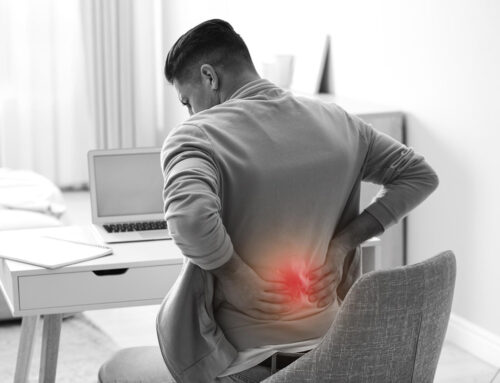Spondylolisthesis is a condition in which a vertebra, or bone, slips out of place. This can lead to back pain and possible nerve damage. It can affect people at any age and even happen during sleep, meaning it’s not something you notice until you wake up and feel pain. When this happens, the joints in your spine deteriorate and start to lose their strength. This blog post provides information about the types, causes, and risk factors. Also the symptoms, diagnosis, and treatment of spondylolisthesis.
What is Spondylolisthesis?
A spinal condition called spondylolisthesis results in lower back pain. It occurs when a vertebra, or spinal bone, slides over the vertebra below it. In most cases, nonsurgical treatment can make your symptoms go away. In most cases, surgery is effective for severe spondylolisthesis. Spinal instability, or the vertebrae moving more than they should, is the main aspect of the condition known as spondylolisthesis. A vertebra misaligns and rests on the vertebra just below it. It might put pressure on a nerve, which might result in the leg or lower back pain.
Types of Spondylolisthesis
The six main types of spondylolisthesis are as follows. The cause determines the type you have. The types consist of:
- Congenital spondylolisthesis: A person’s vertebra is dysfunctional the moment they are born.
- Post-surgical spondylolisthesis: After spinal surgery, a vertebra can move out of position.
- Isthmic spondylolisthesis: Spondylolysis, a different condition, is what causes this. A fracture or crack in a vertebra’s thin part can cause it to slip backward, forward, or over a bone below in spondylolysis.
- Degenerative spondylolisthesis: The discs that support vertebrae thin out and dry out over time. A vertebra can move out of position more easily as a result of this thinning.
- Traumatic spondylolisthesis: The displacement of a vertebra results from an injury or trauma.
- Pathological Spondylolisthesis: It is brought on by another underlying condition, like cancer or osteoporosis.
Causes of Spondylolisthesis
Spondylolisthesis (SL) happens when one vertebra slips forward in relation to another, resulting in a misalignment. This can also happen to the spinal column, causing pain and discomfort. The most common cause of SL syndrome is a slipped intervertebral disc between one vertebra and another, which may stretch or tear the neural structures at the back of the spine. The condition may occur as a result of the weakening of cartilage; deterioration of bone tissue, degeneration of nerves; strain from repeated surgeries; traumatic injury; pregnancy, or other disorders such as arthritis and rheumatoid arthritis.
Spondylolisthesis – Risk Factors
Spondylolisthesis may be more likely to happen to you if you have:
- Genetic: Some individuals with isthmic spondylolisthesis are born with a pars interarticularis vertebra, which is a thinner section of the vertebra. The facet joints, which usually join the vertebrae directly above and below to form a particular function that allows movement of the spine, are connected by this thin piece of bone. These vertebral discs’ thinner regions are more prone to fracture and slip. The genetic component of degenerative spondylolisthesis is also important.
- Athletics: Spondylolisthesis is more likely to occur in young athletes (kids and teens) who play lumbar spine-stretching sports like football and gymnastics. Children’s growth spurts are usually when the vertebrae slip. One of the most frequently occurring causes of back pain in teenagers is spondylolisthesis.
- Age: Degenerative spine conditions, which occur when the vertebrae in the spine weaken due to wear and tear, can appear as we age. Spondylolisthesis risk may be higher among older adults with degenerative spinal conditions. After 50, it becomes increasingly common.
Symptoms of Spondylolisthesis
The most common symptoms of spondylolisthesis are back pain and stiffness/swelling, especially around the small joints of the spine. You might also experience difficulty in moving your back, especially if you have arthritis or excess weight.
You might also experience:
- Spasms in the hamstring’s muscles (muscles in the back of the thighs).
- A stiff back.
- Also, long-term standing or walking difficulty.
- Having trouble bending over.
- Tingling, numbness, or weakness in the foot.
Diagnosis for Spondylolisthesis
The first step in diagnosing this condition is a physical examination. You might find it challenging to raise your leg straight out during basic exercises if you have spondylolisthesis. Your lower back’s X-rays are essential for determining whether a vertebra is misaligned. On the X-ray images, your doctor might also check for any potential bone fractures. If the misplaced bone is pressing on your nerves, your doctor might ask for a more thorough CT scan.
Treatment for Spondylolisthesis
The type of slippage, your symptoms, age, and general health all impact how you should be treated. Options for treatment will be discussed further with you by your healthcare provider. Medication, physical therapy, or surgery might be necessary.
Non-surgical treatments
- Rest: Stop engaging in sports and activities that involve pressure on the back.
- Medication: Taking over-the-counter medicines may help. Your healthcare provider might recommend additional medications if those don’t work.
- Injections: Steroid medications are injected directly into the affected area.
- Physical therapy: You can learn specific exercises from a physical therapist to strengthen your back and abdomen. Pain is commonly reduced after a few weeks by daily exercise.
- Bracing: Your spine can be stabilized by a brace. In order for fractures to heal, the brace restricts movement. Adults do not wear braces.
Surgery
If a person has a high-grade spondylolisthesis, their pain is quite extreme, or the nonsurgical treatments have failed for them, surgery may be necessary. Surgery for spondylolisthesis aims to:
- Relieve the uncomfortable nerve’s pain.
- Where the vertebra slipped, stabilize the spine.
- Bring your function back.
Surgery for spondylolisthesis-related back pain usually entails spinal decompression, with or without fusion. Isthmic spondylolisthesis almost never involves decompression alone. According to studies, decompression alone may not be as effective as fusion. Furthermore, your surgeon removes bone and a disc from the spine throughout a decompression procedure. By creating space for the nerves within the spinal canal, this procedure relieves pain.
Your surgeon joins (fuses) the two affected vertebrae during a fusion procedure. Movement between the two vertebrae is eliminated as they heal and unite into one bone. As a result of the surgery, your spinal flexibility may be somewhat restricted.
After you recover from spondylolisthesis surgery, the pain is usually gone. You can gradually start to resume your normal activities until you’re able to move and function normally again. It is recommended to consult with the best spine surgeon in Bangalore for the best treatment. If you want to know about spine surgery in detail, read this blog post: Spine Surgery in India – Here’s What You Need to Know
After treatment, prevention tips
Your doctor might suggest back and abdominal strengthening exercises, especially for young patients. Make sure to get regular checkups so your doctor can spot any issues before they become serious. If the grade was higher, the likelihood of the spondylolisthesis returning or recurring would be higher. For those who experience a minor slippage, the condition might never return.
Also, there are steps you can take to lower your risk of spondylolisthesis:
- Exercise regularly to build back and abdominal muscles.
- Keep a healthy weight. Your lower back is put under more strain if you have more than normal weight.
- Additionally, maintain a healthy, balanced diet to keep your bones strong and well-nourished.
Final Note
Back pain is generally triggered by spondylolisthesis, but it is not harmful and does not have to take over your life. There are numerous treatments, ranging from prescription drugs and physical therapy to spinal surgery. Speak with your healthcare provider to learn how you can feel better if you have low back pain or find it difficult to walk, stand, or bend over.





Get Social